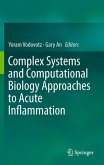This book summarizes the main surface analysis techniques that are being used to study biological specimens/systems. The compilation of chapters in this book highlight the benefits that surface analysis provides.
The outer layer of bulk solid or liquid samples is referred to as the surface of the sample/material. At the surface, the composition, microstructure, phase, chemical bonding, electronic states, and/or texture is often different than that of the bulk material. The outer surface is where many material interactions/reactions take place. This is especially true biomaterials which may be fabricated into bio-devices and in turn implanted into tissues and organs. Surfaces of biomaterials (synthetic or modified natural materials) are of critical importance since the surface is typically the only part of the biomaterial/bio-device that comes in contact with the biological system.
Analytical techniques are required to characterize the surface of biomaterials and quantify their impact in real-world biological systems. Surface analysis of biological materials started in the 1960's and the number of researchers working in this area have increased very rapidly since then, a number of advances have been made to standard surface analytical instrumentation, and a number of new instruments have been introduced.
The outer layer of bulk solid or liquid samples is referred to as the surface of the sample/material. At the surface, the composition, microstructure, phase, chemical bonding, electronic states, and/or texture is often different than that of the bulk material. The outer surface is where many material interactions/reactions take place. This is especially true biomaterials which may be fabricated into bio-devices and in turn implanted into tissues and organs. Surfaces of biomaterials (synthetic or modified natural materials) are of critical importance since the surface is typically the only part of the biomaterial/bio-device that comes in contact with the biological system.
Analytical techniques are required to characterize the surface of biomaterials and quantify their impact in real-world biological systems. Surface analysis of biological materials started in the 1960's and the number of researchers working in this area have increased very rapidly since then, a number of advances have been made to standard surface analytical instrumentation, and a number of new instruments have been introduced.








